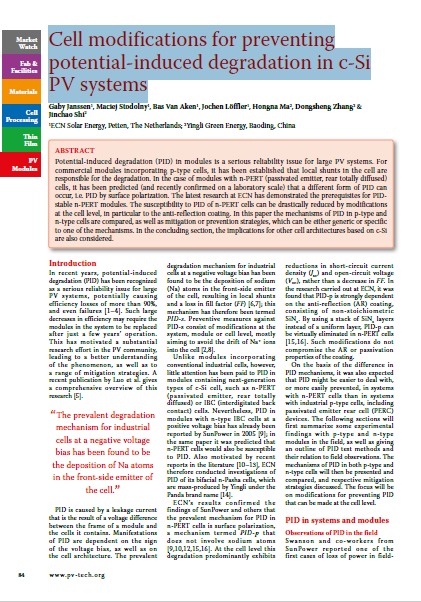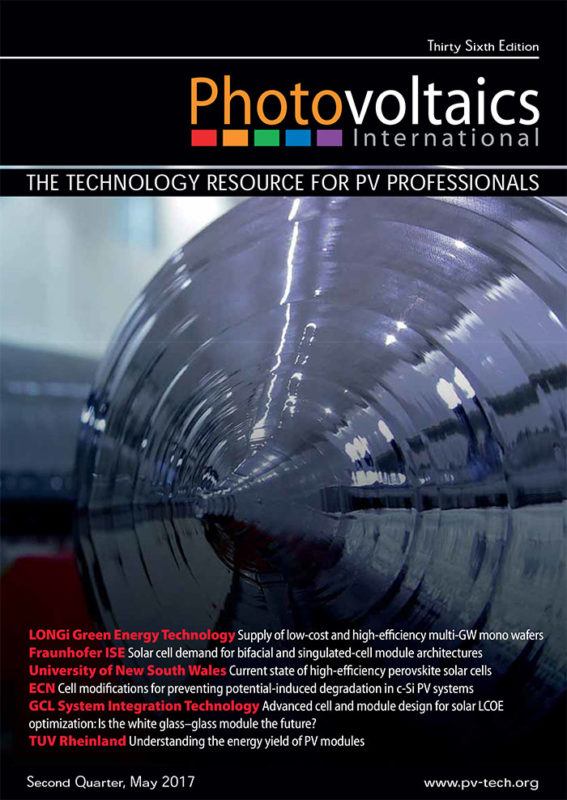By Gaby Janssen, Gaby Janssen obtained her Ph.D. in quantum chemi s t r y f rom the University of Groningen in the Netherlands. At ECN she has been working as a research scientist on the simulation, characterization and optimization of materials for energy conversion technologies. Since 2011 she has been focusing on simulation and modelling of PV cells and modules; Maciej Stodolny, Maciej Stodolny received his M.Sc. in applied physics from Gdansk University of Technology in Poland. His Ph.D. research at ECN and the University of Twente dealt with Cr tolerance of solid oxide fuel cells. He now works as a solid state physicist and materials scientist at ECN Solar Energy.; Bas Van Aken, Bas Van Aken received his Ph.D. in solid state chemistry from the University of Groningen, after which he worked as a postdoc at Cambridge University and at the Max Born Institute for Nonlinear and Ultrafast Optics in Berlin. He is currently a researcher in the PV module technology group at ECN, where he focuses on fabrication, reliability and (outdoor) performance of bifacial and back-contact modules.; Jochen Löffler, Jochen Löffler holds a Ph.D. in physics from Utrecht University in the Netherlands, and has been working on PV and related topics since 1998. He joined ECN in 2005 and is currently a senior scientist and project leader in the field of crystalline silicon solar cells, with a focus on industrial high-efficiency cells and modules.; Hongna Ma, Hongna Ma holds an M.Sc. and has many years’ experience in silicon solar cell research. She joined Yingli in 2008 and is currently the leader of the group working on n-type Si solar cells. Her focus is on R&D of solar cells with ion implantation technology.; Dongsheng Zhang, Dongsheng Zhang has an M.Sc. and joined Yingli in 2004, where he currently leads the battery technology department. His work experience in silicon solar cell research spans many years, and he has acquired an in-depth understanding of all aspects of the crystalline silicon solar cell process; Jinchao Shi, Jinchao Shi holds an M.Sc. and has worked in silicon solar cell and module research for many years. He joined Yingli in 2006, where he is currently the general manager of the Technology Center. He has extensive experience in lab to fab transference, as well as in cell and module mass production.
In recent years, potential-induced degradation (PID) has been recognized as a serious reliability issue for large PV systems, potentially causing efficiency losses of more than 90%, and even failures [1–4]. Such large decreases in efficiency may require the modules in the system to be replaced after just a few years’ operation. This has motivated a substantial research effort in the PV community, leading to a better understanding of the phenomenon, as well as to a range of mitigation strategies. A recent publication by Luo et al. gives a comprehensive overview of this research [5].



